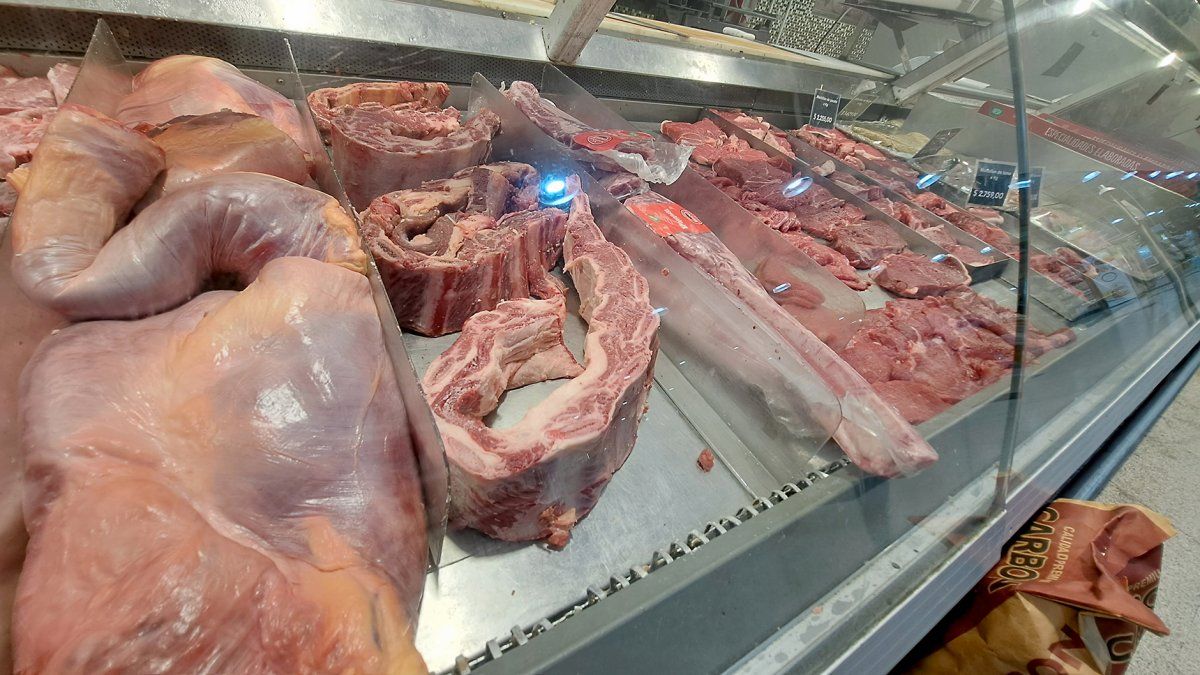From the sector they expect an end of the year with considerable tensions in meat prices, which adds to the inflationary pressure of the months remaining until the end of 2023.
After the recent increase in livestock values, meat prices to the consumer were resented with an increase that ranges between 15% and 20%, which could be attributed to different factors, including the decrease in the availability of livestock due to drought and previous uncertainty to the electionswhich discouraged many producers from selling their animals.
The content you want to access is exclusive to subscribers.
The reality of the agricultural sector is “complex today”. Firstly, the aggressive drought that affected production. And secondly, “we have had to accelerate Leaving the estate ahead of schedule“, points to Ambitthe president of the Argentine Chamber of Matarifes (CAMYA), Leonardo Rafael, which has generated different problems.


“As if that were not enough, we faced to a market with very low demandwhich makes it difficult to achieve the usual sales volumes,” warns Rafael, who adds: “Looking toward the future, The uncertainty is overwhelming. It seems that a complicated end of the year awaits us with a shortage of livestock in the market”.
Meat: expensive cuts vs. cheap cuts
Regarding prices, the expert maintains that meat cuts experience seasonal variations in their prices. In general, the most expensive cuts throughout the year are: the loin, the peceto and some varieties of milanesa, such as the buttock. On the other hand, certain cuts, such as chopped, shoulder and roast beef tend to be cheaper at different times of the year. However, Rafael asserts, the most affordable cuts include: the little dove and the bear(although this may vary depending on the season).
Meat Inflation Supermarkets Consumption

Mariano Fuchila
For its part, Alberto Williamspresident of the Association of Butcher Owners of CABA, explains that the cheapest cuts “They are always the ones in the front room“, that is to say, the ossobuco, the tapa de asado, the azotillo, the roastbeef, the shoulder and the roast, “which would have to be one of the cheapest.” Meanwhile, the most expensive are always “the cuadril, the tail, the peceto, the steak with loin and the milanesas”.
According to a survey carried out by Ámbito in different large supermarkets, the most expensive cuts are:
- Loin – $6,669 kg.
- Recipe Milanese – $6,389 kg.
- Quadril Tail – $6,299 kg.
- Chorizo Steak – $5,600 kg.
- Steak Eye – $5,600 kg.
- Steak ring of bullfighting – $5,799 kg.
- Chorizo Steak – $5,599 kg.
- Buttock Milanese – $5,149 kg.
- Quadril steak – $4,799 kg.
- Vacuum sliced meat – $4,699 kg.
- Square Milanese – $4,699 kg.
- Vacuum of Steer – $4,599 kg.
- Loin ball Milanese – $4,699 kg.
The cheapest are:
- Buttock cover – $3,399 kg.
- Special minced meat – $2,569 kg.
- Vacuum packed – $2,010 kg.
- Quadril vacuum packed – $1,899 kg.
- Matambre – $1,948 kg.
- Common minced meat – $1,559 kg.
- Vacuum packed roast – $1,539 kg.
Rising meat prices: why is it and what to expect by the end of the year
“There are three central factors that put pressure on the price of meat”explains to this medium David Miazzo, chief economist of the Agricultural Foundation for the Development of Argentina (FADA).
The three key factors that influence meat prices are:
- Inflation: The monthly CPI above 12% affects all products in the economy, including meat.
- Increase in feed costs: Food costs have increased due to the agricultural dollar and the export dollar, which has impacted the price of inputs such as corn and soybeans.
- Scarcity of finances: The drought has caused a shortage of livestock, as many animals were culled prematurely due to lack of grass, and breeding and calf production have been affected. This is not just a temporary situation and is expected to last for several years.
These factors, along with exchange and inflationary tensions, put upward pressure on meat prices. However, “the purchasing power of the consumer It also acts as a limit to these price increasess”, warns Miazzo, who concludes that, despite the restriction of purchasing power, “The shortage of supply contributes to the continued increase in prices in the meat market”.
So things are, both Miazzo and Rafaelthey maintain that an end of the year is expected with quite a few tensions in meat prices, which adds to the inflationary pressure of the remaining months until the end of 2023.
Source: Ambito




